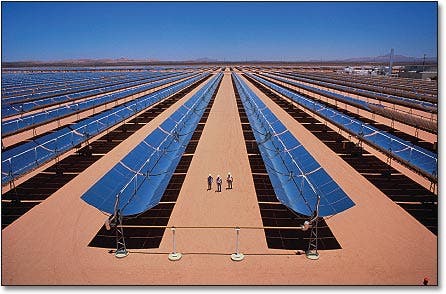
Researchers from Boston College and MIT have managed to develop a new kind of thermo-solar technology by applying a new technique which involves high-performance nanotech materials arrayed on a flat panel – they’re results have proven to be as much as eight times more efficient than current solar thermo electric generators, at little to no advance in cost.
Thermo electric panels is a very expensive and difficult to implement technology, which requires huge installations of a number of panels and works simply with sunlight to heat water and produce thermal energy. Now, with this latest research in mind, the cost of developing huge solar-thermo installation might become worthwhile with its almost tenfold improvement in efficiency.
The team of researchers managed to do so by combining two new measures which enhanced electricity-generating capacity to solar-thermal power technology – better light-absorbing surface through enhanced nanostructured thermoelectric materials, which was then placed within an energy-trapping, vacuum-sealed flat panel.
We have developed a flat panel that is a hybrid capable of generating hot water and electricity in the same system,” said Boston College professor of physics, Zhifeng Ren. “The ability to generate electricity by improving existing technology at minimal cost makes this type of power generation self-sustaining from a cost standpoint.”
Cheap and Efficient Solar Thermal Energy
I have great faith in this latest research, which might finally bring clean technology to veritable industrial usage and the masses, and also impact the rapidly expanding residential and industrial clean energy markets, according to Ren. Hot water and electricity, it’s all clean energy and now finally it might also become cheap, and expand to mass production.
“Existing solar-thermal technologies do a good job generating hot water. For the new product, this will produce both hot water and electricity,” said Ren. “Because of the new ability to generate valuable electricity, the system promises to give users a quicker payback on their investment. This new technology can shorten the payback time by one third.”
The report was published in the journal Nature Materials.
via physorg.






